Rhinoplasty, commonly known as a nose job, is a surgical procedure designed to enhance the appearance and function of the nose. Whether performed for aesthetic refinement or medical reasons, rhinoplasty requires a carefully planned recovery to achieve optimal results. While the surgery is crucial, the post-operative phase plays a significant role in determining the final outcome. Understanding what happens during recovery, especially 1 week after rhinoplasty, helps patients confidently navigate the process.
Dr. Viral Desai, a well-known cosmetic and plastic surgeon in Mumbai, highlights the significance of the first week after rhinoplasty for healing. He advises patients to rest, diligently follow post-operative care instructions, and be patient with recovery. With expert guidance and proper aftercare, most side effects subside, allowing patients to appreciate the initial results of their nose reshaping.
With over 24 years of experience and a patient-centred approach, Dr. Viral Desai is highly regarded for his expertise in rhinoplasty in Mumbai. He has assisted countless individuals in achieving their desired nose aesthetics while also ensuring functional improvements. His commitment to excellence and meticulous attention to detail has made him one of the leading choices for nose surgery in India.
Not sure how your nose should look and feel at this stage? Let’s discuss the key changes you may experience 7 days after rhinoplasty.
What Should I Expect 1 Week After Rhinoplasty?
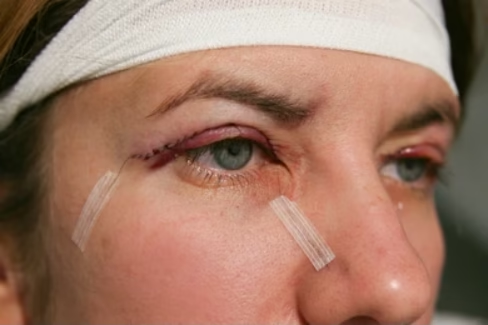
At 7 days after rhinoplasty, most patients begin to feel more comfortable. However, you should still expect:
- Swelling: While much of the initial swelling decreases, residual puffiness is common, particularly around the nose and under the eyes.
- Bruising: Any remaining bruises should start fading but may still be visible.
- Nasal Congestion: Due to swelling inside the nose, you may experience congestion, making breathing slightly difficult.
- Nasal Splint Removal: In most cases, the external splint is removed at the 1-week mark.
- Mild Discomfort: Some tightness or slight discomfort around the nose is normal.
By the end of 2 weeks after rhinoplasty, most of these symptoms will further subside, allowing you to see more refined results.
Worried about lingering bruises around your nose and eyes? Let’s explore why bruising occurs and when it should fade.
Causes of Swelling 5 Days After Botox
Bruising is quite common at 1 week after rhinoplasty. The extent varies from person to person and depends on factors like surgical technique, skin type, and individual healing response. Typically:
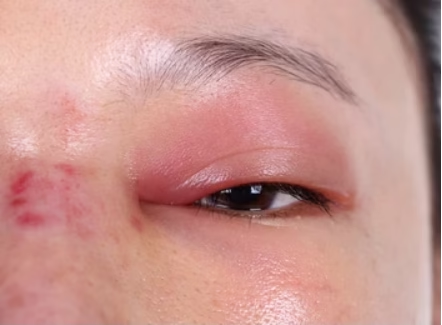
- Dark purple or blue bruises begin to fade into yellowish-green by the end of the first week.
- Patients who bruise easily or have extensive bone work may experience more pronounced discolouration.
- By 2 weeks after rhinoplasty, most bruising will have significantly diminished.
Experiencing unexpected bruising? Get in touch with a specialist for a thorough evaluation and expert guidance on recovery.
Want to speed up healing and reduce bruising? Let’s delve into some effective recovery tips.
How to Minimize Bruising 1 Week After Rhinoplasty
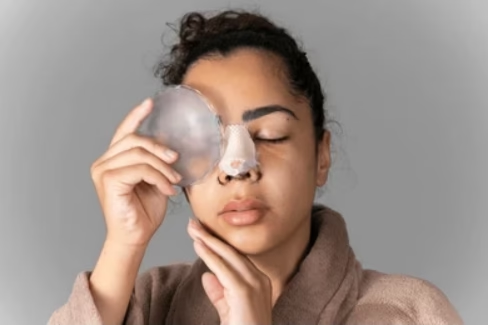
Cold Compresses (First Few Days): While ice packs are not applied directly to the nose, using them on your cheeks can reduce swelling.
Keep Your Head Elevated: Sleep with your head propped up to prevent fluid accumulation.
Avoid Blood Thinners: Steer clear of aspirin, ibuprofen, and certain supplements like vitamin E that can increase bruising.
Stay Hydrated: Drinking plenty of water promotes faster healing.
Follow a Nutrient-Rich Diet: Foods high in Vitamin C and K help reduce bruising and inflammation.
Limit Physical Activity: Avoid intense exercise, bending over, or lifting heavy objects, as these can increase swelling.
Adhering to these aftercare tips can help ensure a smoother recovery.
Concerned about unusual symptoms after surgery? Let’s explore when it’s time to reach out to a specialist.
When to Consult Your Surgeon?
While mild swelling and bruising are normal, consult your specialist if you experience:
Excessive Swelling: If 1 week after rhinoplasty swelling worsens rather than improves.
Persistent Pain: Severe or throbbing pain that doesn’t subside with prescribed medication.
Breathing Difficulties: If nasal congestion does not improve.
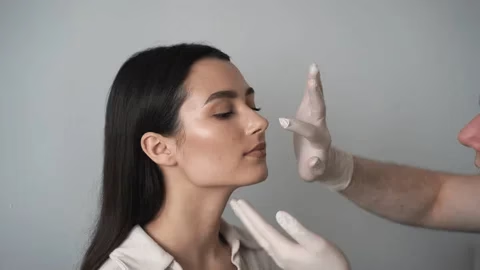
Unusual Discharge: Yellow or green fluid from the nose, indicating infection.
Fever or Chills: Signs of infection that require immediate medical attention.
Unsure if your symptoms are normal? Schedule a consultation with a specialist to ensure a safe and smooth recovery.
Conclusion
1 week after rhinoplasty, you are past the most challenging phase of recovery, but patience is key. While swelling and minor bruising are still present, following aftercare instructions will ensure a smooth healing process. Stay in touch with your specialist for guidance, and remember final results take time to appear fully.
With the right support and medical advice, patients can expect improved nasal aesthetics and functionality. If you have any concerns or want to explore rhinoplasty options, consulting an expert like Dr. Viral Desai, an ace plastic and cosmetic surgeon in Mumbai, can help you make informed decisions about your transformation.
Frequently Asked Questions
Is it safe to wear glasses 1 week after rhinoplasty?
No, you should avoid wearing glasses that rest on the nasal bridge for at least 4-6 weeks to prevent pressure on the healing bone and cartilage.
Can I sleep on my side 1 week after rhinoplasty?
No, sleeping on your back with your head elevated is recommended to prevent pressure on the nose.
Can I blow my nose 1 week after rhinoplasty?
No, blowing your nose can cause bleeding or disrupt healing. Use saline sprays to keep your nostrils moist.
How long before I see the final results of rhinoplasty?
Significant improvements are visible after 3 months, but full results appear for up to a year.
Will my sense of smell be affected after rhinoplasty?
Temporary changes in smell are common due to swelling but usually return to normal within a few weeks.
When can I return to work after rhinoplasty?
Most patients can return to work 7-10 days after surgery, depending on the extent of swelling and bruising.
Will my nose look smaller immediately after rhinoplasty?
Swelling may initially make your nose appear larger; final results will be visible after complete healing.
Reference Links:
https://redefineu.in/blogs/1-week-after-rhinoplasty/
https://www.plasticsurgery.org/news/blog/what-to-expect-during-your-rhinoplasty-recovery
Disclaimer: This page is for informational purposes and not for promotional use.
